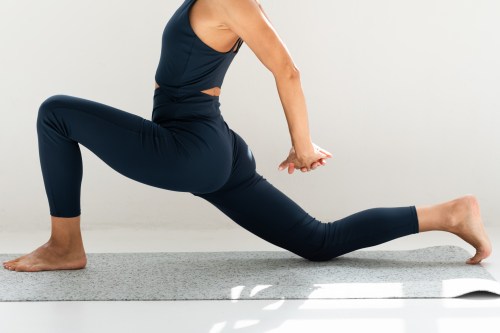So. You want to run a marathon. First of all, congratulations! Second of all, it’s time to get to work. The thought of pounding the pavement for 26 (.2) straight miles can feel nothing short of overwhelming, but with a proper routine in place, there’s no doubt that you can do it. If this is your first rodeo, a 20-week marathon training plan is a great way to make it happen.
“The best candidates for a 20-week plan are folks who are training for their very first marathon, those who want a more gradual mileage buildup, those who are returning to the marathon distance after some time off, and those who can use help establishing some structure into their running lives,” says New York Road Runners (NYRR) coach Melanie Kann. “The biggest benefit of a 20-week plan is more time to get a really solid foundation under you. Think of building a house for a second: the stronger the foundation, the stronger the overall structure of the building. The same thing applies in running.” Here, she shares everything you need to know so you can hit the ground running for the next 20 weeks. Literally.
Plan your training
Once your timeline is in place, it’s all about picking the proper plan—and there are a lot of options out there. The NYRR virtual training plan, for example, starts you out with four weeks of “base-building miles” in order to help you establish a solid aerobic base and a good routine. “We begin to incorporate speed workouts about a month into the plan, and by then, runners are ready to embrace them because they’ve been running solid mileage for four weeks,” she explains.
When it comes to training, running is only one aspect of the entire process—you need to keep yourself physically and mentally strong and up for the challenge in other ways, too. “My mantra is: ‘You can only train as well as you can recover,’ which means that sleep, rest, and recovery techniques such as foam rolling and gentle stretching are vital to strong running performance,” says Kann. “Also, a simple strength routine to keep the larger muscle groups engaged, will go a long way towards injury prevention. This strength work doesn’t need to be extravagant: 15 minutes or so of basic core work, lunges, squats, planks, bridges, and clamshells is plenty.”
Stay motivated
When you’re building up over the course of a half of a year with a 20-week marathon training plan, it can admittedly be difficult to stay motivated. But, Kann says, the most important thing you can do is remember why you set out on this journey in the first place. “There was probably a vision or a goal in your mind when you signed up for this plan—write that down and post it somewhere that you can see it,” she says. “Is there a photo that motivates you? Make that the home screen of your phone. Is there a special song that pumps you up? Make that the song of your alarm clock. These little reminders will go a long way!”
Remember that sometimes bad runs happen to good people. One run does not define you, as long as you get out there and try again. Success is made up of a series of small decisions and choices day after day— so if you have a bad day, you’ll get a chance to turn your success story around with your very next run.
Put together a support system
One more thing you can do: Find yourself a running buddy. “Accountability is key—if you have a friend to meet first thing in the morning for your runs, or if you have a buddy to do your speed workouts with, you’ll be more likely to show up and do your best week after week,” suggests Kann. Or, look for group training programs, because running with other people can help those 15 and 20 milers fly by a whole lot faster than they would if you were alone.
Regardless of whether you’re just starting out on week one or looking toward the finish line, the most important thing you can do throughout the process is to listen to your body. “There’s a difference between discomfort from pushing yourself and actual pain from injury,” says Kann. She suggests getting a support team—including a doctor, a physical therapist, and run store staffers you trust—in place before you start training, so that you know exactly who to call when you need advice.
Follow this plan
Ready to run? Coach Mel put together a personalized plan for Well+Good readers using the NYRR virtual trainer 20-week TCS New York City marathon plan as a base. “This plan is more geared toward a first-time marathoner who has consistently run about 20 miles per week for the month prior to training,” she says. If you’re starting off from a slightly more advanced place, you may want to follow along with the NYRR virtual trainer, which launches June 17 (20 weeks ahead of the 2019 NYC Marathon).
Long run: The long run is the cornerstone to your marathon training. Successful long runs are important for building confidence, aerobic development, and fuel utilization. The pace-effort level of long runs should be slow and conversational, around 4 to 5 on a scale of 1 to 10.
Regular run: Regular runs representing the majority of the running that you will do. The pace on these runs should be comfortable, around 5 to 6 on a scale of 1 to 10. It is common and maybe even preferred to start your regular runs slowly and then gradually speed up as you go.
Easy run: Easy run days are strategically placed in your program to help aid recovery after hard efforts. Look to run these at a very relaxed effort level no harder than 4 on a scale of 1 to 10. Remember the goal of these easy runs is to help get your mind and legs ready for your next hard session, so it’s important to resist the temptation to run too hard on these runs.
Flex day: This is the best day of the week to substitute your run with a cross-training session or a day off. Certain forms of cross-training can stimulate aerobic development with less wear and tear than running, which means those sessions on a bike or in a pool can help your race time. Feel free to choose which option is best for your training depending on how you feel: rest, run, or cross-train.
Intervals: Typically, interval training consists of runs any distance of 1600 meters (about a mile) or less, with intervals of rest in between. Intervals are preformed to teach our bodies what race pace feels like in shorter durations, as well as introduce faster running to allow our bodies to manage the build-up of lactate more efficiently. Most interval workouts are done on a track with either passive (walking) or active (jogging) recovery in between each effort.
Tempo runs: Tempo workouts are an excellent way to adapt to running harder over longer periods of time. Tempo paces can vary from race pace, to slightly slower than race pace, or even slightly faster than race pace. Tempo runs are interjected into workouts and even long runs to be able to handle certain paces over longer distances during training. Tempo runs are great confidence builders.
Hills: Incorporating hill work into your training program is a great way to work on efficiency and to recruit different muscle fibers based on the intensity of the hill work. More importantly, incorporating hills into your training will allow you to learn how to run by feel on the incline and get back to race pace after the climb. This is an important aspect of training, especially for a hilly course.
Fartleks: Fartlek is a Swedish word for speed play and we are going to focus on the latter word (play). Fartleks involve harder segments of running (on segments) followed by easier segments (off segments). Typically, both on and off segments range from 30 seconds to a few minutes. Fartleks help runners get used to changing paces and help break up a run.
As you feel (AYF): We get so caught up in pace, distance, GPS, hills, flat, humidity, rain, snow, trails, track, etc. that we forget about the best assessment tool out there: Ourselves. You will find as you feel (AYF) days built into your program. On AYF days, you may leave the watch behind and just set out to run. Observe your surroundings and listen to what your body is saying—it is a lot more than this training plan can tell you.
Rating of perceived exertion (RPE) Your rate of perceived exertion will be measured on a scale of 1 to 10. A 1 rating would be equivalent to sitting on the couch, while a 10 rating is a maximal race effort. Many of your workouts will have a prescribed RPE to help guide you to how hard you should be working. Your RPE is not an exact science, but you need to honestly evaluate yourself and trust yourself. Our goal is to teach you to become your own best coach.
0→ No exertion
1→Very easy (light walk)
2→Fairly easy
3→Easy
4
5→Moderate (relaxed run pace)
6 →Somewhat hard (still conversational while running)
7→Hard (only answer questions with one or two words)
8→Very hard
9
10→Maximal (race effort)

Here’s what one Well and Good editor learned about her body from running a marathon for the first time. Plus, the best running shoes to help you hit the pavement in style (and comfort).
Sign Up for Our Daily Newsletter
Get all the latest in wellness, trends, food, fitness, beauty, and more delivered right to your inbox.
Got it, you've been added to our email list.











